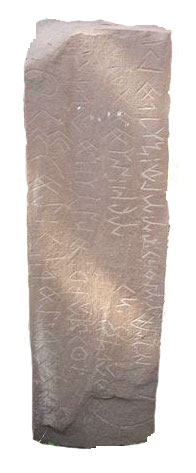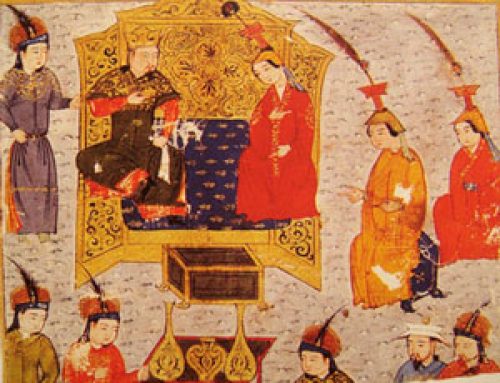Central Asian stories and languages: People speaking Mongolian
Central Asian languages
Around 3000 BC, most people in Central Asia spoke one of three different kinds of languages. Some people spoke Indo-European languages like Sogdian or Tocharian. Other people spoke East Iranian languages like Pashto. And some people, especially in the eastern part of Central Asia, spoke Altaic languages like Turkish or Mongolian. (Nobody is sure whether Turkish is really related to Mongolian or not.)
Who were the Sogdians?
Yamnaya and Indo-European languages
All our Central Asia articles
Indo-European languages spread
Around 2000 BC, the Indo-Europeans – the Yamnaya – spread out to live in Iran and Afghanistan, and so more people spoke Indo-European languages like Sogdian. Probably that was because climate change caused a bad drought.
What was happening in 2000 BC?
Climate change and world history
Not so many people in Central Asia spoke East Iranian languages. By 1000 BC, most people in western Central Asia spoke an Indo-European language and most people in eastern Central Asia spoke a Turkish or Mongolian language.

An early Turkish inscription (ca. 700s AD)
Altaic languages spread
Beginning about 300 AD, Turkic and Mongolian speakers like the Rouran and the Gokturks started to conquer land from the Indo-Europeans.
Who were the Rouran?
The Gokturk Empire
The Mongol Empire
By the time of the Mongol Empire in the 1200s AD, most people in Central Asia spoke a Turkic or Mongolian language. But on the western side of the Ural Mountains people still spoke Indo-European languages like Russian, Polish, Ukranian, or Armenian.
Medieval Russia
And medieval Poland
Writing comes to Central Asia
People may have started to write down some of the Indo-European languages like Scythian by around 650 BC. That was long after their neighbors to the south in China and West Asia started to write, but earlier than the Northern Europeans to their west.
Tale of Igor’s Campaign
If the Scythians did write, it was only short lines here and there – there aren’t any written Scythian stories or poems. By the 1100s AD, people were writing Russian epic poems like the Tale of Igor’s Campaign. They also wrote biographies of Russian saints. About 1475 AD, a Russian traveler wrote an account of his visit to India.
Alpamysh and Book of Dede Korkut
Nobody wrote down anything in Turkish until about 700 AD. After that, Turkish poets began to sing long poems like the Alpamysh and the Book of Dede Korkut. (Compare these to Beowulf, composed in Europe about the same time). Around 1000 AD, people were singing the Epic of Koroglu. By around 1400 AD, somebody wrote down the Book of Dede Korkut.
Alpamysh
Book of Dede Korkut
Epic of Koroglu
More Central Asian stories: Mongol epics
Nobody wrote down anything in Mongolian until 1227 AD, the year that Genghis Khan died (and then it was just a short thing). Instead, Mongolian poets sang long poems, usually about a hero who fights a monster called a manggus. The manggus has many heads, and the hero always wins.
Epic of King Gesar
Secret History of the Mongols
For example, poets sang the Tibetan Epic of King Gesar in the 1400s AD, though nobody wrote it down until the 1700s. About 1240 AD, somebody wrote a long poem about Genghis Khan’s life called “The Secret History of the Mongols“.
But as the Mongols conquered all of Asia, from the Mediterranean Sea to the Pacific Ocean, the people of those countries kept on writing poems and histories and stories. About 1290, the Jewish Rabban bar Sauma wrote a short account in Syriac of his travels to Europe, for example.




